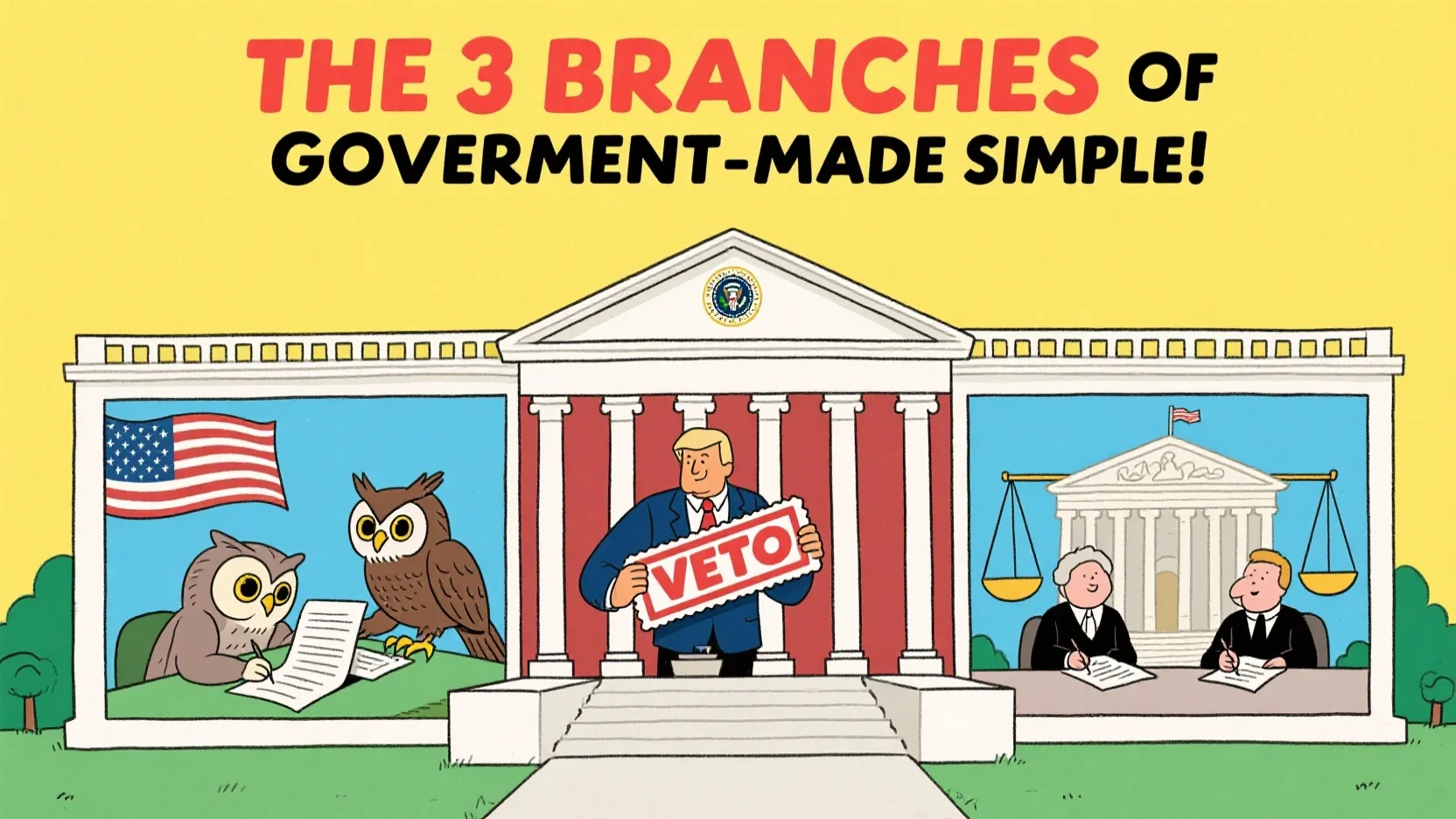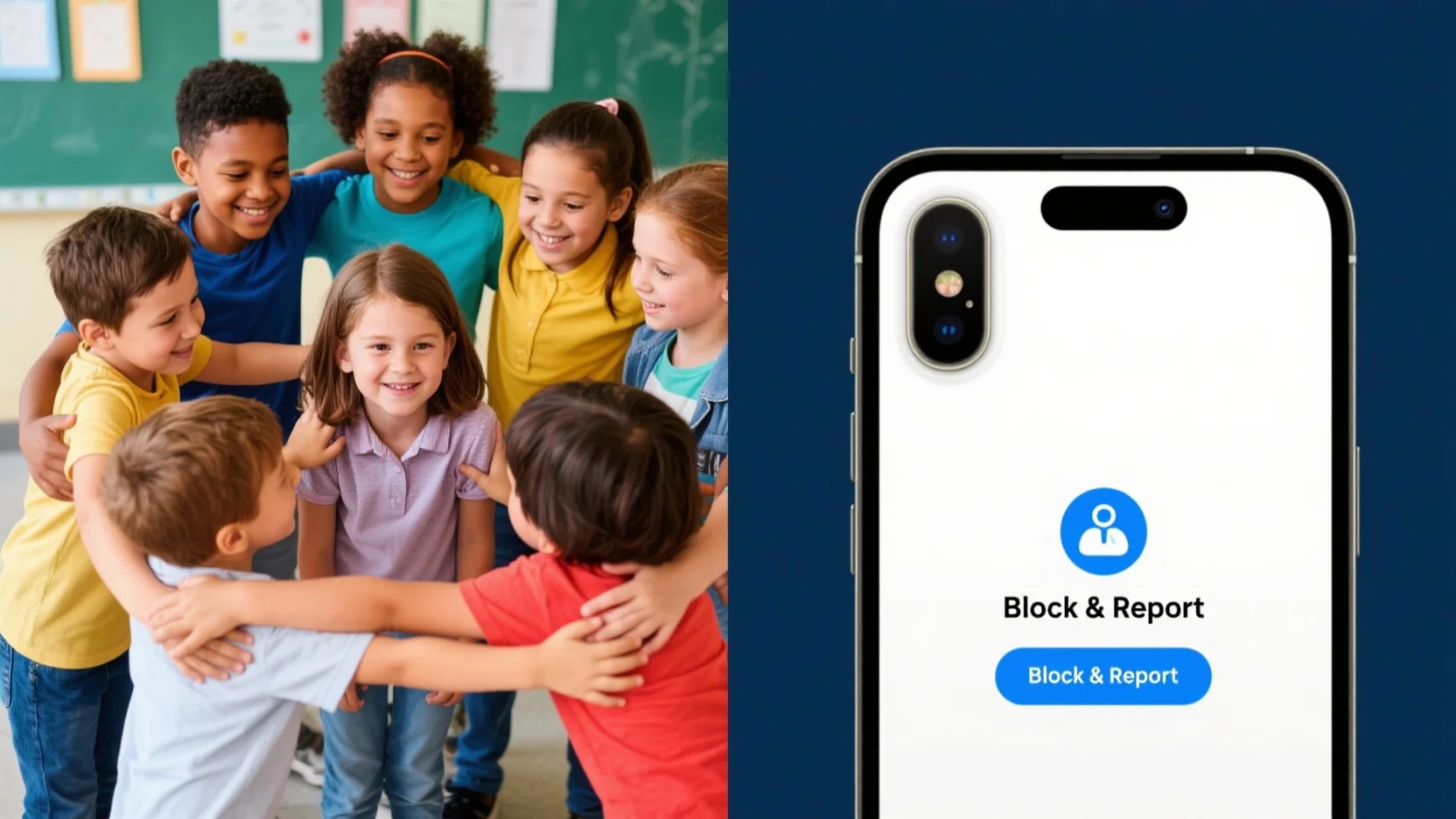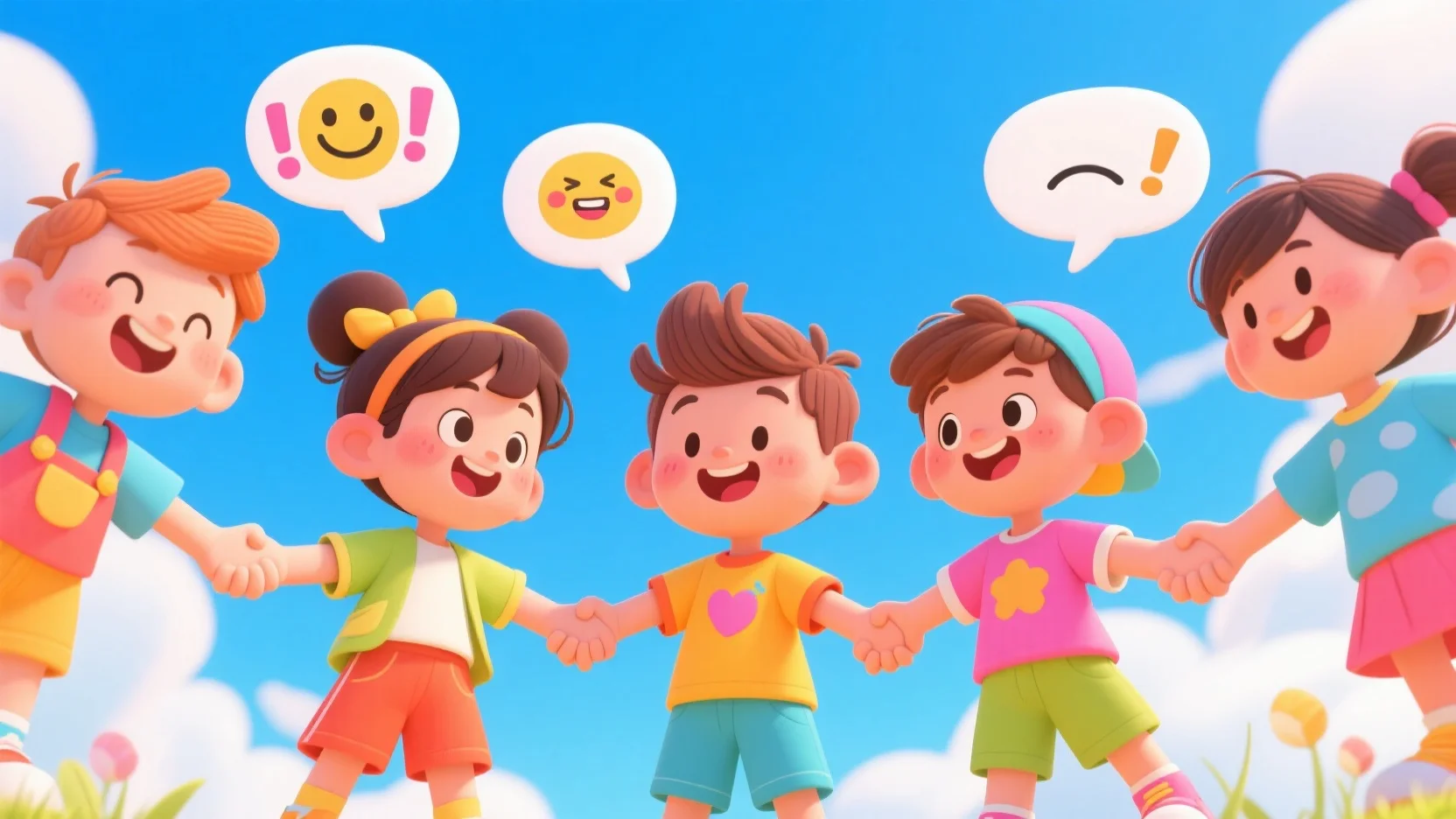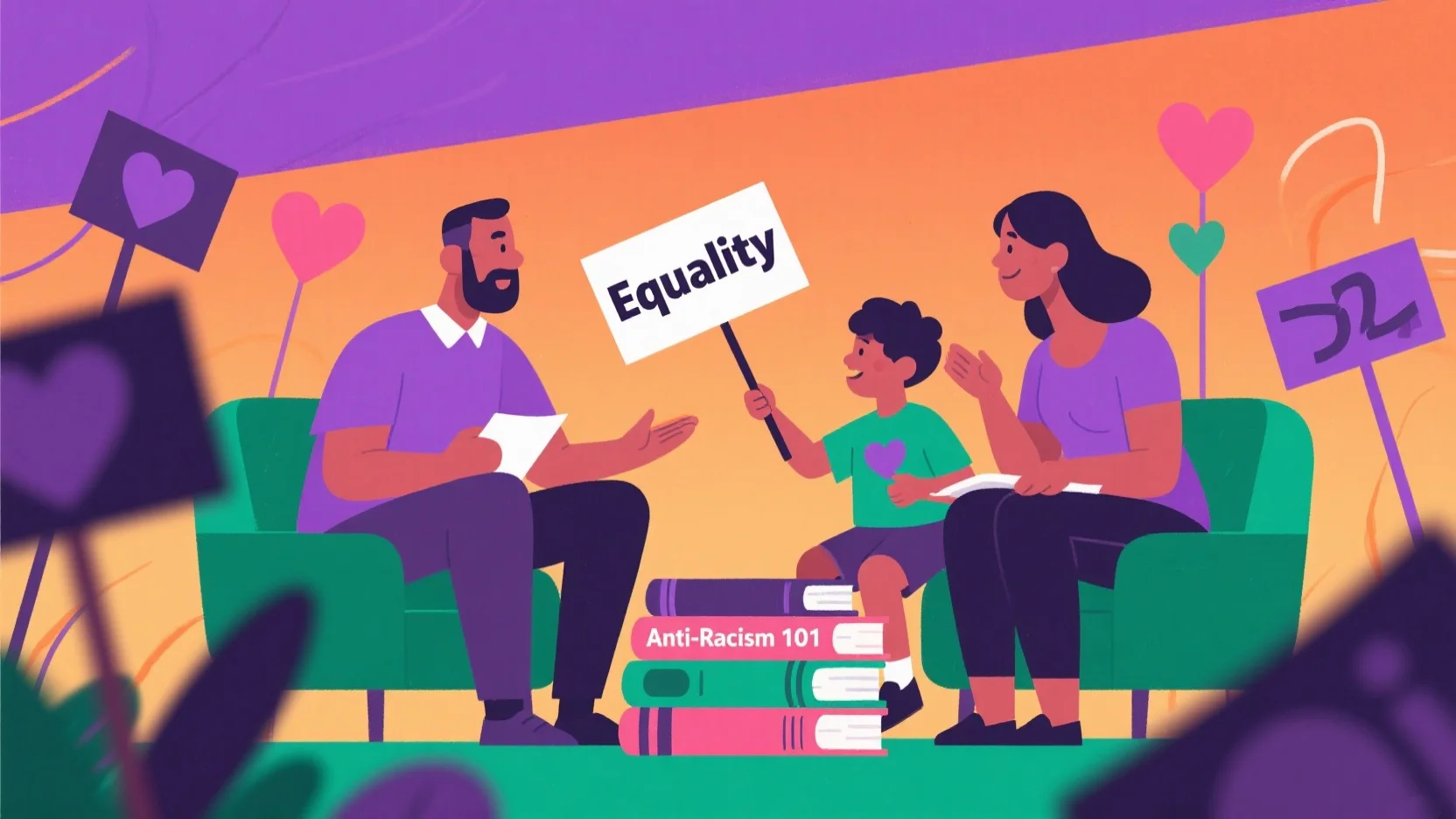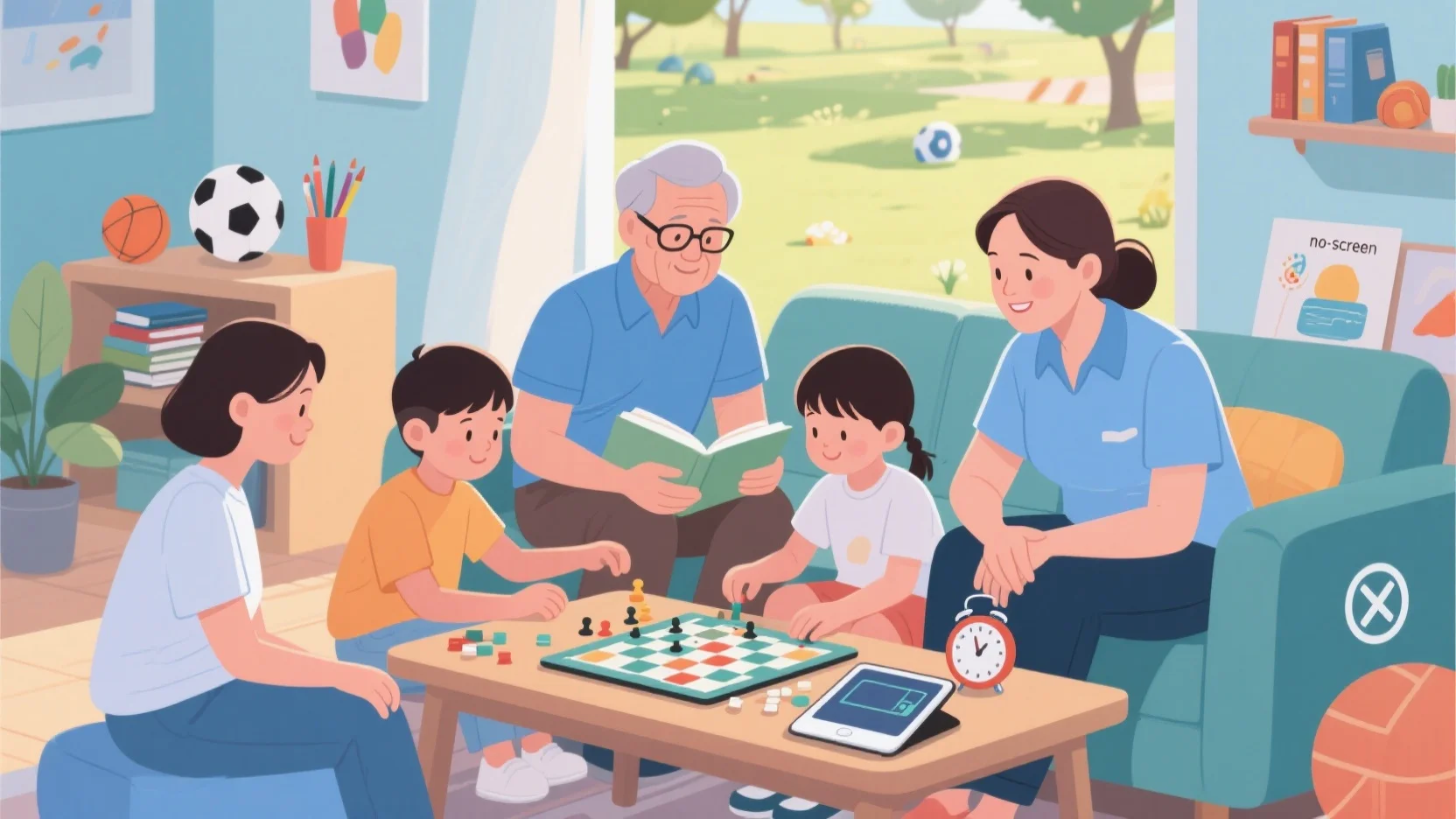🏛️ Quick Overview
The U.S. government has 3 branches that work together to make, enforce, and interpret laws:
- Legislative (Congress) → Makes laws
- Executive (President) → Enforces laws
- Judicial (Courts) → Interprets laws
🔍 Kid-Friendly Q&A
1. What Do Each of the 3 Branches Do?
| Branch | Who’s In Charge? | Main Job |
|---|---|---|
| Legislative | Congress (Senate + House) | Writes laws |
| Executive | President + Departments (FBI, DOJ) | Carries out laws |
| Judicial | Supreme Court + Other Courts | Decides if laws are fair |
Fun Fact: The president can’t make laws alone—Congress has to vote on them first!
2. How Do “Checks and Balances” Work?
- Congress makes a law → President can veto (say no) → Courts can rule it unfair.
- President wants a rule → Congress can overrule it.
- Courts decide something’s wrong → Congress can change the law.
Example: If the president says, “No more homework!” → Congress can vote to keep homework → Courts can decide if that’s fair.
3. Who’s in Congress?
- Senate: 100 senators (2 per state, like state captains).
- House: 435 reps (more people = more reps, like team players).
- Together: They propose laws, approve judges, and can impeach (investigate) leaders.
4. How Do You Join the Supreme Court?
- President picks you.
- Senate votes (majority wins).
- You serve for life (or until retirement).
🎤 Pro Tip for Parents
Use real-life examples kids understand:
- Making laws = Like family voting on pizza night.
- Veto power = Like a parent saying “No extra screen time.”
- Courts = Like a teacher settling a playground dispute.
📚 Test Your Knowledge!
Q: If Congress passes a law, but the president disagrees, what can happen?
A: The president can veto it (say no), but Congress can override with enough votes.
Q: Who nominates Supreme Court justices?
A: The president, but the Senate must approve them.
